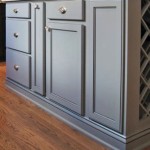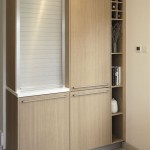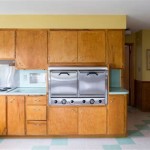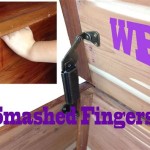Black Mold Under Kitchen Cabinets: Essential Aspects
Black mold, scientifically known as Stachybotrys chartarum, is a toxic fungus that can cause severe health problems. It often grows in moist, dark environments, and one common location for black mold growth is under kitchen cabinets.
The presence of black mold under kitchen cabinets can pose significant health risks. Inhaling black mold spores can trigger allergic reactions, such as sneezing, watery eyes, and nasal congestion. Prolonged exposure can lead to more severe respiratory issues, including asthma and bronchitis. Additionally, black mold produces mycotoxins, which are poisonous substances that can damage the immune system and internal organs.
There are several reasons why black mold may grow under kitchen cabinets. One common cause is moisture accumulation due to leaks from sinks, pipes, or dishwashers. Another factor is poor ventilation, which allows moisture to become trapped and create the ideal conditions for mold growth.
Identifying black mold under kitchen cabinets can be challenging, as it can often be hidden behind the cabinets. If you suspect the presence of mold, be on the lookout for the following signs:
- Visible black or dark green mold growth
- Musty odor
- Discolored or warped wood
- Peeling or bubbling paint
If you discover black mold under your kitchen cabinets, it's crucial to take action promptly. Here are the recommended steps to address the problem:
- Eliminate the source of moisture: Fix any leaks or improve ventilation to reduce the moisture levels.
- Clean the mold: Use a bleach solution or a commercial mold cleaner to kill the mold. Wear protective gear, such as gloves and a mask.
- Repair or replace damaged materials: Remove and replace any wood or other materials that have been damaged by mold.
- Restore proper ventilation: Ensure adequate airflow under the cabinets by installing fans or vents.
- Monitor the area: Keep an eye on the area to prevent future mold growth.
Preventing black mold growth in the future is essential. Here are some tips to reduce the risk:
- Fix any leaks promptly.
- Ventilate the kitchen well by opening windows and using fans.
- Wipe up spills and clean the kitchen regularly.
- Use a dehumidifier to reduce moisture in the air.
- Inspect the area under kitchen cabinets regularly for signs of mold growth.
Black mold under kitchen cabinets is a serious issue that should be addressed promptly. By understanding the causes and health risks associated with black mold, you can take appropriate measures to prevent its growth and protect your health and well-being.

Top 5 Causes Of Black Mold Under Kitchen Sinks Get The Answers

Causes Of Mold In The Kitchen And How To Avoid It Home Matters Ahs

What You Need To Know About Black Mold And Cabinets

Black Mold Under My Sink Is It Dangerous See What You Should Do

Mold Solutions By Cowleys Removal Services Photo Album Grows Due To Kitchen Leak In Red Bank Nj

Mold In Your Kitchen Water Fire Restoration

Getting Rid Of Black Mold Under Sink Fast Easy Method

What To Do If You Find Toxic Black Mold Safewise Com
Photos Environmental Services Group Inas Llc

How To Remove Mold From Under Sink Frontdoor
Related Posts








